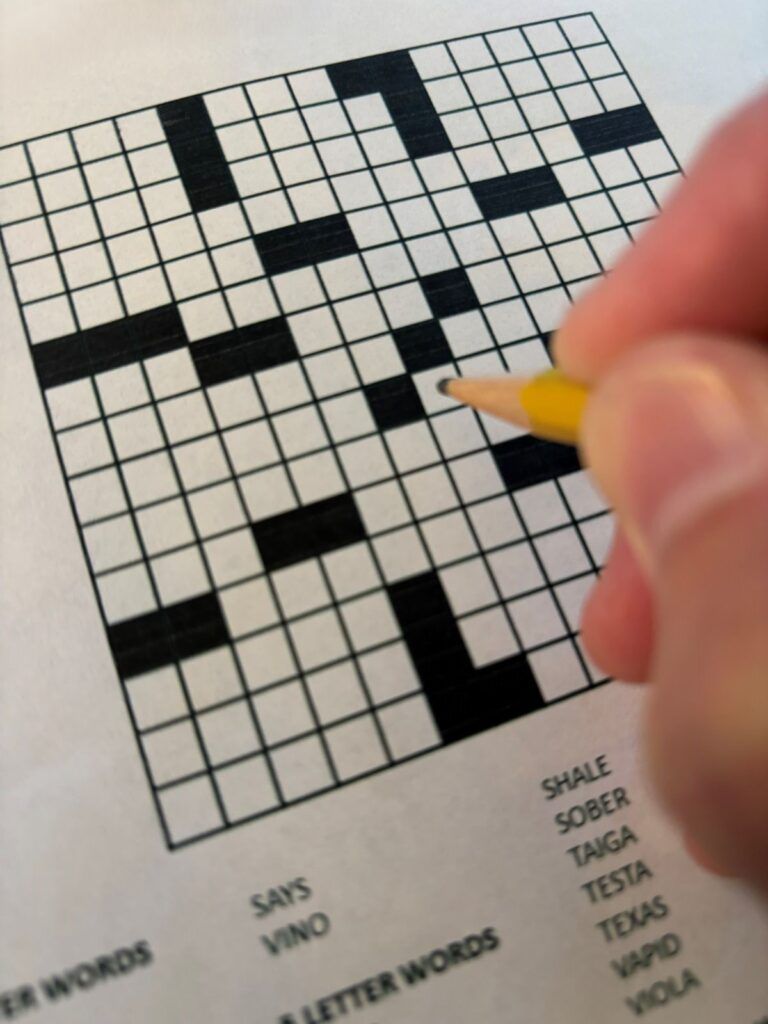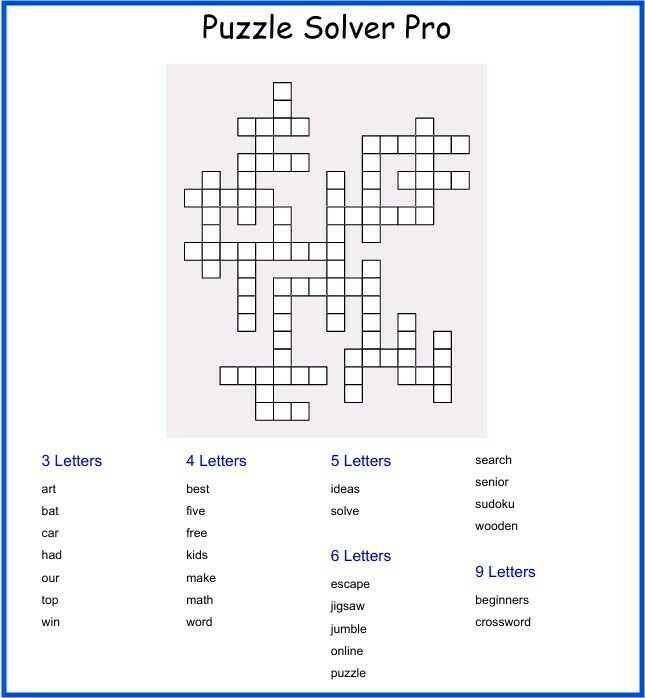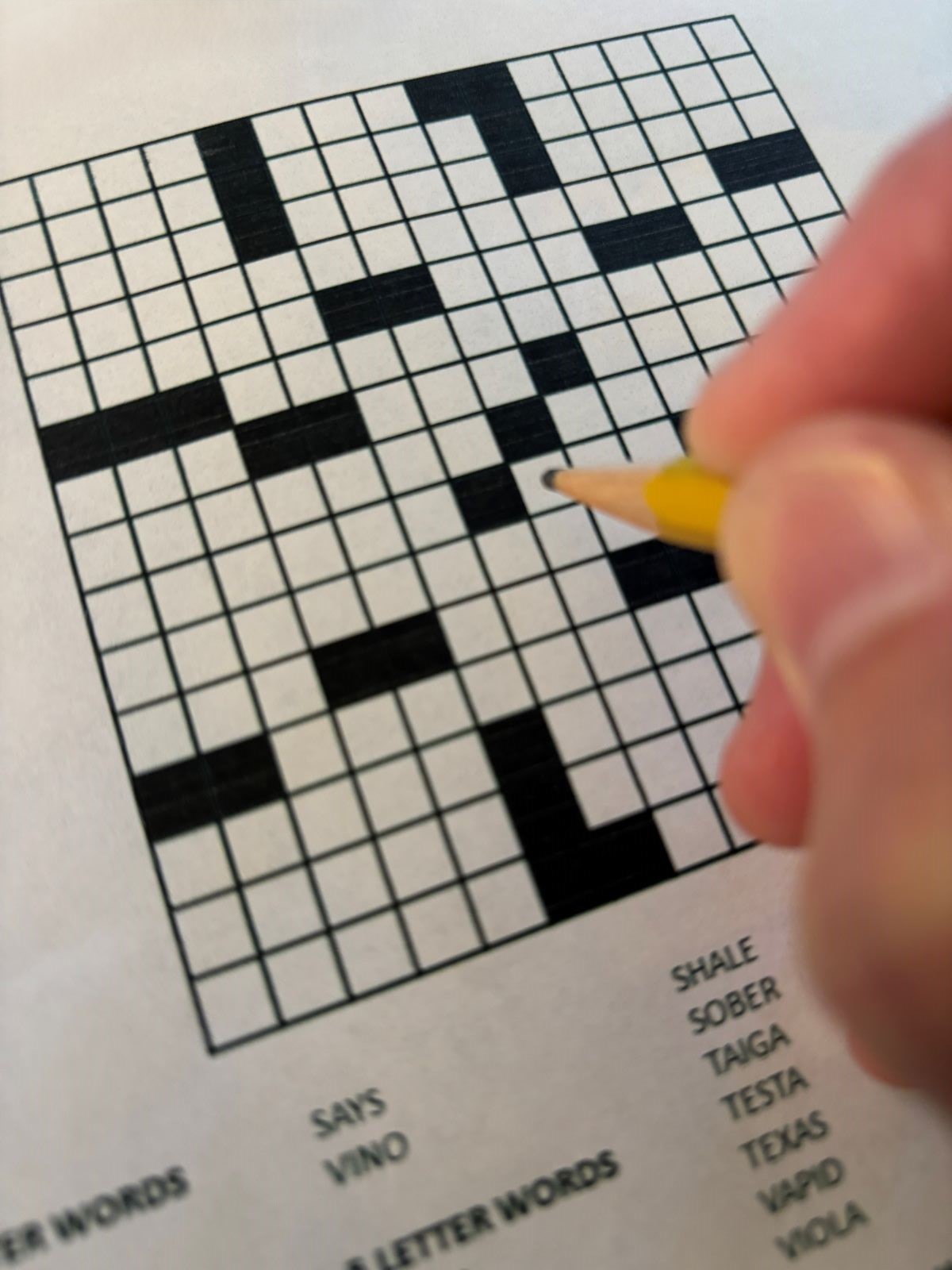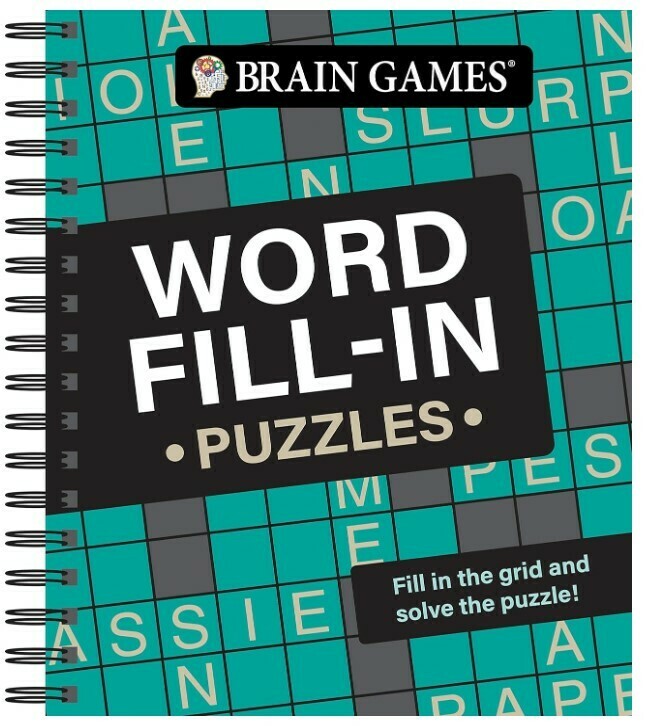
Word Fill-In puzzles, also known as Fill-in-the-Blank or Fill-It puzzles, are a wonderful blend of word search and crossword puzzles. The most common Word Fill-In puzzles are essentially a grid of blank spaces where words need to be placed. These words are provided in a list, and the objective is to fit them into the grid perfectly. Unlike crosswords, Word Fill-In puzzles don’t typically come with any clues. Instead, the challenge lies in the fitting process itself. Each word fits only in one specific spot, and finding the correct arrangement is what makes these puzzles intriguing.
Also, they are more than just about filling in blank spaces; it’s a mix of logic, vocabulary, and sometimes, a bit of guessing. They challenge our attention to detail, and sometimes even our general knowledge. Whether you’re a puzzle enthusiast looking for your next challenge or someone new to this type of puzzle, Word Fill-Ins have something to offer for everyone. It’s a testament to their simplicity and the inclusiveness of the challenges they offer.
This article will take you through several aspects of Word Fill-In puzzles, including understanding their appeal and benefits such as sharpening your vocabulary, problem-solving skills, and strategic thinking. We will also investigate some strategies for solving this type of puzzle, how to craft your own puzzles and some additional resources you may find useful.

The Appeal of Word Fill-In Puzzles
- Simplicity and Accessibility – One of the greatest appeals of Word Fill-In puzzles is their simplicity. You don’t need any special skills or knowledge to start, which makes them incredibly user-friendly. All that is required is a good grasp of vocabulary, which makes these puzzles accessible to a wide audience, from young children to elderly adults. They are straightforward to understand and can be picked up easily, making them perfect for quick and enjoyable entertainment. Also, the lack of complex rules or instructions means that anyone can jump in and start solving without feeling overwhelmed. Lastly, besides the many physical booklets available, there are plenty of resources found on the internet.
- Mental Exercise – Word Fill-In puzzles provide excellent mental stimulation. They require you to think critically and strategically about where each word can fit, engaging in various cognitive processes. This type of brain exercise can improve cognitive functions such as memory, problem-solving skills and deductive reasoning, as you must recall words and consider their possible placements. Additionally, the challenge of finding the correct words to fit the given spaces promotes analytical thinking and concentration. Regularly engaging in these type puzzles can help maintain mental agility and sharpness, making them a valuable tool for cognitive health. The process of solving Word Fill-Ins requires you to think critically, make connections between different concepts, and sometimes even think outside the box. Whether you’re flipping through letters to find patterns or using vocabulary knowledge to fill in the blanks, your brain is getting a serious workout.
- Educational Benefits – Word Fill-In puzzles are great educational tools that benefit both kids and adults. They encourage reading and comprehension skills, as children need to understand word meanings and how they fit together. Teachers often incorporate these puzzles into lesson plans to help students reinforce spelling, enhance vocabulary, and develop word association skills – all in a playful and engaging manner. For adults, Word Fill-In puzzles help in keeping the mind sharp and expanding vocabulary, providing a fun and engaging way to learn new words and phrases. They also serve as a useful tool for language learners, offering practice in a practical and enjoyable format.
- Stress Relief – Engaging in a Word Fill-In puzzle can be a great way to unwind and relax. The focus required to solve these puzzles can act as a form of meditation, taking your mind off everyday stresses and providing a pleasant distraction. The repetitive nature of filling in words can be soothing, offering a break from some of the grind of daily life. Additionally, the sense of accomplishment and satisfaction that comes from completing a puzzle can boost your mood and reduce stress levels. This makes Word Fill-In puzzles not only a fun activity but also a beneficial one for mental well-being.

Tips and Tricks to Solve Word Fill-In Puzzles
If you’re new to Word Fill-In puzzles, here are some tips to help you get started:
- Use Pencil and Eraser: If you’re working on a paper puzzle, use a pencil so you can easily erase and correct mistakes. This trial-and-error method is often necessary when solving more complex puzzles.
- Start Slowly: Choose smaller puzzles at first, get familiar with the structure, and remember it’s totally fine to look up words in the answer key when you’re stuck.
- Find the Best Starting Point: Review the provided word list and how many different words there are of each word length. Some puzzles provide several starting letters or a starter word. This is usually a good place to begin. Another strategy is to start with the longest words first. There are typically fewer longest words in the puzzle and therefore very limited placement locations. By placing the longest words first, you reduce the number of possibilities for the remaining words.
- Cross Off Words on the List: As words are placed, draw a single line through them or make a check mark next to them so that you don’t inadvertently try to place the same word more than once. Don’t black them out completely in case you need to undo the placement of one of the words in the puzzle if you later find that it doesn’t fit in that location. If a word is truly a guess, consider circling the word on the list instead of lining it out at first until you verify that is the correct location.
- Look for Unique Letter Combinations: Some words will have infrequently used letters or unique letter combinations that are easy to spot on the grid. Use these unique features to place words accurately. Letters such as Q, X, Z, etc. should have limited possible locations in the grid. Also, combinations such as CH, SH, TH, ED, ING, etc. may be easier to place.
- Cross-Referencing: Constantly cross-reference the words you’ve placed with the list of words you have left. This helps ensure that every word fits perfectly, and no mistakes have been made. You may need to check several horizontal or vertical intersecting words to ensure the words being placed have a unique solution that wouldn’t be possible with any of the other remaining words of the same length.
- Correct Mistakes: Many of these types of puzzles require trial and error to be solved. There may be several words that fit a particular location, but you won’t know for sure until further into solving the puzzle. It is understandable that mistakes occasionally occur. You might encounter a few stumbling blocks along the way, and that’s normal. Each mistake is a steppingstone to becoming better at Word Fill-Ins. Don’t sweat it. Just erase, backtrack if needed and correct the error when the right solution is identified. Try to learn why you made the error in the first place to continue improving your skills with Word Fill-In puzzles.
- Practice, Practice, Practice: There’s no better strategy than that. Gradually build in more challenging puzzles to improve your skills. Solve other types of word puzzles, such as crosswords, word searches and word jumbles to build your vocabulary and puzzle solving skills.
Variations of Word Fill-In Puzzles
Word Fill-In puzzles come in various forms, each offering a unique twist on the traditional format. Here are some other variations:
- Themed Puzzles: These puzzles revolve around a specific theme, such as animals, food, or history. All the words to be filled in are related to the theme, adding an extra layer of fun and challenge.
- Number Fill Puzzles: Instead of words, these puzzles use numbers. The concept is the same, but the challenge shifts to finding the right sequence of numbers to fill the grid.
- Picture Fill Puzzles: Some Word Fill-In puzzles include pictures as hints for the words to be placed. This variation is particularly popular among younger audiences and helps in developing visual recognition skills.
Creating Your Own Word Fill-In Puzzle
For those who love a creative challenge, making your own Word Fill-In puzzles can be incredibly rewarding. It involves a balance between complexity and solvability that can tease the brain without frustrating the solver. Here’s a simple guide to get you started:
- Choose Your Words: Decide on a list of words you want to include. The length and number of words will depend on your audience that will be solving puzzle. The selection of words can be random or based on a theme. Make sure you have a good mix of short and long words.
- Design the Grid: Draw a grid on paper, or use graphing paper with existing grid lines, or use a digital tool. The size of the grid should correspond to the number of words and their lengths. Various online tools can assist creators in generating word lists and constructing grids, allowing for finer control over difficulty and thematic consistency.
- Fit the Words: Begin placing the longest words first, followed by shorter ones. Ensure that all words fit perfectly without overlapping or leaving gaps.
- Test and Refine: Once you’ve placed all the words, try solving your puzzle to ensure it’s solvable. Make any necessary adjustments to improve the flow and difficulty level.
The Community Aspect
Word Fill-In puzzles also foster a sense of community. Puzzle enthusiasts often share their creations online, participate in competitions, and engage in discussions about strategies and tips. Joining such communities can enhance your puzzle-solving experience and provide opportunities to connect with like-minded individuals.
Recommended Resources
There are plenty of sources for finding Word Fill-In puzzles. The sources include books, booklets, websites and smartphone apps. Here are some examples:
- Brain Games – Word Fill-In Puzzles
- Word Fill Ins Puzzle Book for Adults
- Razzle Puzzles – Free Puzzle Games – also has an app available for your smartphone.
- WordFit.com
- Word Fit Puzzle Maker
- Apollo Puzzles
Final Thoughts
Word Fill-In puzzles are a journey into the world of words, logic, and creativity. Whether you are solving a puzzle on your morning commute, teaching a child new words, or simply looking to unwind, these puzzles offer a myriad of benefits. Their simplicity, educational value, and ability to engage the mind make them a timeless favorite. So, grab a pencil, laptop or your smartphone, and get started with Word Fill-In puzzles. You might find that this simple, yet challenging activity becomes one of your favorite ways to relax and exercise your mind. Become a Puzzle Solver Pro!
Follow us on Facebook for more articles, tips, tricks and giveaways!
PuzzleSolverPro is reader-supported. When you buy via links on our site, we may earn an affiliate commission at no extra cost to you. It’s a simple way you can support our mission to bring you quality content.




As someone who enjoys solving puzzles in my free time, I can say its the best way to relax your mind. My daughter also loves puzzles, and we often spend our weekends solving jigsaw puzzles together. It’s a wonderful way to bond and unwind.
I thoroughly enjoyed reading this article on Word Fill-In puzzles. It’s a well-rounded guide that highlights the appeal and benefits of these puzzles, offering insights into their simplicity, mental exercise value, educational benefits, and even their stress-relief qualities. The tips and tricks provided for solving Word Fill-In puzzles are practical and helpful, especially for newcomers.
Puzzles are more than just a pastime. They are a way to exercise the mind, learn, relax, and connect with others.
Thank you for the thoughtful comments and kind words, Kavitha. I also enjoy puzzle time with my adult daughter when she visits. Her and I share the same passion for solving puzzles of many different kinds. I’m so glad you enjoyed the article. Take care!
Robert
Hey Robert!
I tend to gravitate towards crossword puzzles which have clues or hints as opposed to word fill-in puzzles. They are challenging and fun to fill out. However, I can see why people enjoy these types of puzzles. Perhaps it is the creativity aspect or there are no clues. Either way, filling puzzles is relaxing, mentally stimulating, and is a great way to connect with like-minded people.
Hi Godwin!
I also tend to lean towards crossword puzzles as my primary but like to mix it up with other types of puzzles to keep it interesting for me. Thanks for sharing your insightful thoughts. Take care!
Robert